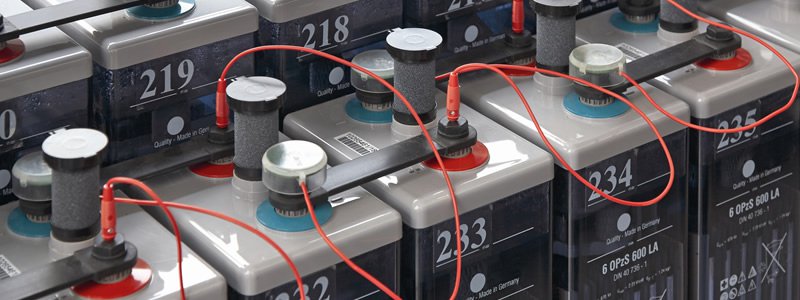
Battery storage carries “an additional cost” but can help cut network costs and “offers opportunities for additional income,” said Stella Hayward, corporate communication officer at Western Power Distribution (WPD). “If the solar power is used to charge the battery at midday, this reduces the amount of current the distribution network has to carry,” she said. “Similarly, if the battery is discharged in the evening, when load typically peaks, this also reduces the amount of current that has to be carried. Keeping the maximum currents down reduces the need to spend money on the network.”
WPD this month became one of the first utilities in Europe to combine storage with solar power when it sponsored the installation of a 300 kW, 640 kWh battery system alongside a 1.5 MW PV plant in Somerset, UK. The system will be used to test up to nine grid storage applications.
As well as reducing maximum current, said Hayward, “charging and discharging the battery can raise or lower the voltage on the network, which could help keep the distribution network kept within voltage limits. Again, this reduces the cost to WPD of fixing voltage problems. Also, storing excess energy in the middle of the day, when demand is low, and then using it in the evening, when demand is higher, allows us to keep the energy in local area.”
For PV plant owners looking to deliver extra value to utilities, adding storage to solar could help increase revenues by allowing solar-generated electricity to be sold in the evening, when power prices are usually higher. Other potential revenue streams include allowing additional solar panels to be installed on site without breaching the maximum export limit, and providing commercial services to the distribution network operator.
Oliver Soper, founding director of the renewable energy technical consultancy OST Energy, said there are at least five ways in which utilities could benefit from having access to solar plants with storage. They are:
-
Storing energy for delivery during peak demand periods, such as during the Triad season in the UK.
-
Delivering fast frequency response services of up to five seconds.
-
Providing primary or secondary response of up to 15 minutes.
-
Participating in capacity markets.
-
Load shifting.
However, he noted, not every solar installation would likely be suitable for the delivery of all these storage applications. For example, one of the requirements for frequency response services in the UK is to have equal export and import capacities. That would mean a solar plant with a 10 MW export link would also need to install a similar-sized import connection, which might not be technically or economically viable in most cases.
Nevertheless, that still leaves some applications, such as load shifting, which could be relatively easy to deploy with storage. And the economics are becoming more favourable all the time. “It’s going to be different now to in two to three years’ time because of reductions in the cost of storage,” said Soper.
